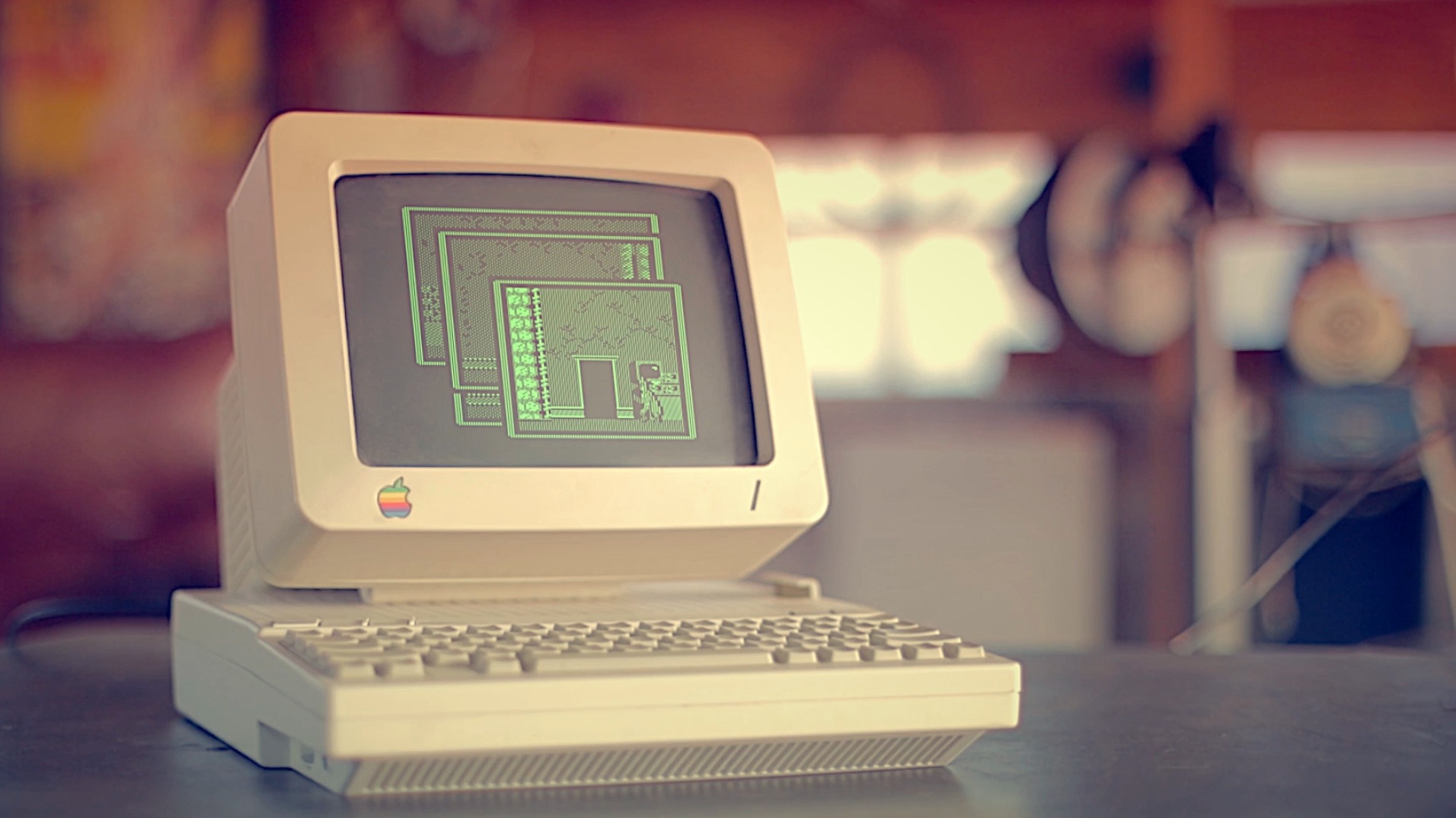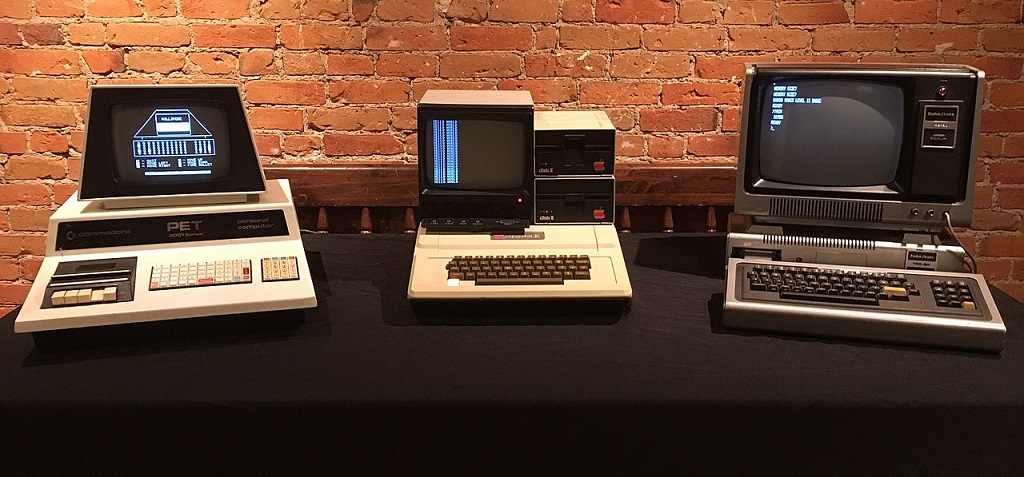The situation has changed with the advent of personal computers. So, educational software came to all universities, schools and homes. We continue the story under the cut.

Photo: Matthew Pearce / CC BY
Computer revolution
The device that led to the revolution of personal computers was the Altair 8800 based on the Intel 8080 microprocessor. The bus designed for this computer became the de facto standard for subsequent computers. Altair was developed by engineer Henry Edward Roberts in 1975 for MITS. Despite a number of shortcomings - the car had no keyboard or display - in the first month the company sold several thousand devices. The success of the Altair 8800 paved the way for other PCs.
In 1977, Commodore entered the market with its Commodore PET 2001. This computer in a sheet metal case weighing 11 kilograms already had a monitor with a resolution of 40x25 characters and an input device. In the same year, Apple Computer introduced its Apple II. He received a color display, a built-in interpreter of the BASIC language and could reproduce sound. Apple II became a PC for ordinary users, so not only technically savvy specialists at universities worked with it, but also teachers in schools. This spurred the development of affordable educational software.
At one point, a US teacher, Ann McCormick, was worried that some teens read extremely hesitantly and slowly. Therefore, she decided to work out a new methodology for teaching children. In 1979, McCormick won a grant and received Apple II from the Apple Education Foundation. Joining forces with Stanford psychology doctor Teri Perl and programmer Joseph Warren from Atari, she founded The Learning Company . Together, they began to develop educational software for students.
By 1984, The Learning Company had published fifteen educational games for children. For example, Rocky's Boots in which students solved a variety of logic puzzles. She won first place in the ranking of the Software Publishers trade association. There was also a Reader Rabbit, teaching reading and writing. For ten years, it has sold 14 million copies.
By 1995, the company's revenue reached the bar of $ 53.2 million. Children's Technology Review magazine editor Warren Buckleitner even called The Learning Company the “Holy Grail of learning.” According to him, it was the work of Ann McCormick’s team that helped teachers understand how powerful educational tools computers can be.
Who else did this?
In the first half of the 80s, The Learning Company was not the only developer of educational software. Educational games were released by Optimum Resource, Daystar Learning Corporation, Sierra On-Line and other small companies. But the success of The Learning Company was able to repeat only Brøderbund - it was founded by brothers Doug and Gary Carlston (Doug and Gary Carlston).
At one time, the company developed games, perhaps their most famous project is Prince of Persia. But soon the brothers turned their attention to educational products. Their portfolio includes: James Discovers Math and Math Workshop for teaching basic mathematics, Amazing Writing Machine for teaching reading and grammar, and Mieko: A Story of Japanese Culture - a Japanese history course in the form of entertaining stories for children.
Teachers took part in the development of applications, they also made lesson plans using this software. The company regularly held seminars in schools to popularize computer training, published paper manuals for users, and discounted programs for educational institutions. For example, at the usual price of Mieko: A Story of Japanese Culture at $ 179.95, the school version cost almost half the price - $ 89.95.
By 1991, Brøderbund occupied a quarter of the US educational software market. The success of the company attracted the attention of The Learning Company, which bought a competitor for $ 420 million.
Student software
University education has not remained on the side of the computer revolution. In 1982, MIT purchased dozens of PCs in an auditorium for engineering students. A year later, the Athena project was launched at the university with the support of IBM. The corporation provided the university with computers worth a few million dollars and its programmers to develop educational software. Students of all specialties got access to new technologies, and a computer network was launched on campus.
At the end of the 80s, an educational infrastructure based on UNIX appeared in MIT, and university specialists developed programs for other universities. One of the most successful was recognized as a comprehensive system for teaching natural sciences - university staff not only wrote a computer course of lectures, but also launched a system for testing students' knowledge.
Athena became the first experience of large-scale use of computers and software at the university and a model for similar projects in other educational institutions.
Educational ecosystem development
Entrepreneurs began to show interest in educational software in the early 80s. Leaving Microsoft in 1983 due to disagreements with Bill Gates, Paul Allen founded Asymetrix Learning Systems. There he developed an environment for ToolBook learning content. The system made it possible to create various multimedia products: courses, applications for testing knowledge and skills, presentations and reference materials. In 2001, ToolBook was recognized as one of the best interactive tools for e-learning.
The ecosystem of distance learning began to develop. The pioneer was FirstClass, which was developed by people from Bell Northern Research - Steve Asbury (Steve Asbury), John Asbury (Jon Asbury) and Scott Welch (Scott Welch). The package included tools for working with e-mail, file sharing, chats, conferences for teachers, students and parents. The system is still being used and updated (it is part of the OpenTex portfolio) - three thousand educational institutions and nine million users worldwide are connected to it.

Photo: Springsgrace / CC BY-SA
The proliferation of the Internet in the 90s led to the next revolution in education. The development of educational software continued and received a new development: in 1997 the concept of an "interactive learning environment" (Interactive Learning Network) was born.
We will talk about this next time.
At us on Habré:
- “Where to go for knowledge”: lectures and technology conferences at ITMO University
- The birth of educational software and its history: from mechanical machines to the first computers